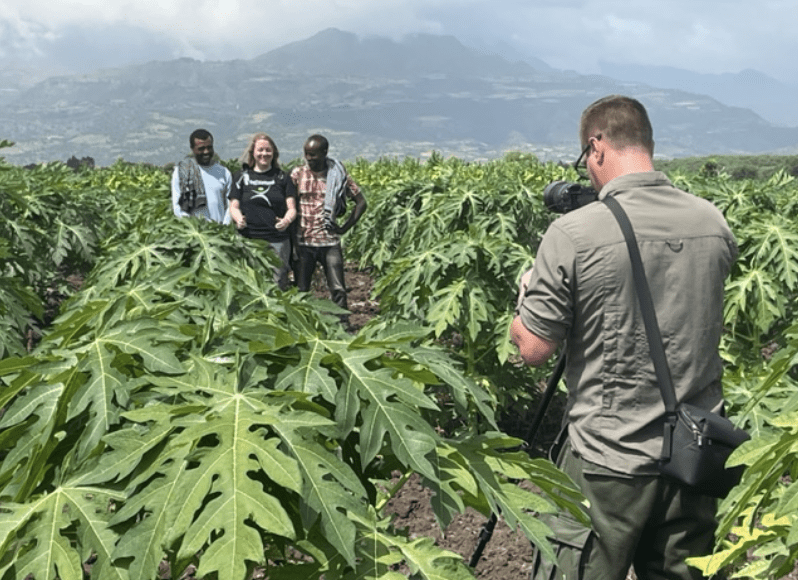Recently, Devxchange went to Ethiopia to visit our project, Forestry For Life. This visit involved a firsthand look at the project and how the organization is helping people.
Keep reading to learn more about our team’s journey to Forestry For Life in Ethiopia.
What is the Forestry For Life Project?
The Forestry For Life project is dedicated to helping struggling farmers escape the cycle of poverty through training, education and a helping hand. These farmers gain skills to help themselves become self-sufficient and productive members of society. Each year, the project trains with over 150 model fruit farmers until they are successfully up and running.
Forestry For Life started as an agroforestry project among the Gumuz, an ethnic group in western Ethiopia. The Gumuz are traditional hunters and gatherers whose farming practices involve shifting cultivation.
Clans in this tribe, however, have been involved in violent conflict with other groups, resulting in socioeconomic instability and disruption of their farming practices.
Visiting farmers in the Forestry For Life program
As the team arrived at the village, they were greeted by a visibly lush farm. They met two eagerly waiting model farmers, Getahoon and Negash.
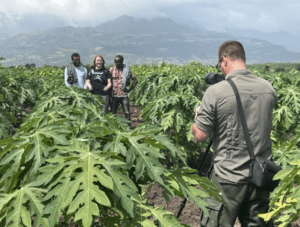
Getahoon and Negash at their farm with our Devxchange volunteers.
Getahoon and Negash were incredibly proud to share their story with us. They were originally growing onions, tomatoes and sorghum, which brought in about 900 CAD a year. But they had visited Tere and saw Papaya trees and a seedling site program. They also knew a model farmer in their area who had even better yields of papayas than in Tere. Soon, they were inspired to come back and invest in a papaya tree business.
Getahoon and Negash are expected to yield 20,000 CAD this year from the farm – a life-changing amount. Not only is the papaya farm lifting Getahoon and Negash out of poverty, but it is also filling the area with nutritious fruits. From an educational perspective, the pair are able to help curious surrounding farmers learn about the project as well.
Enjoying local Ethiopian food and culture at Shewa Robit
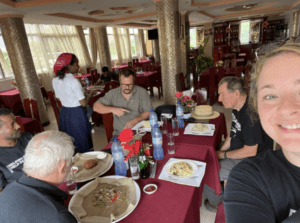
After learning about the farmers’ incredible success stories, the team enjoyed the company of our local guides, and ventured onto Shewa Robit for lunch and dinner.
For dinner, everyone ate family-style off one plate, a traditional Ethiopian custom. The dish was absolutely delicious – the middle piece was called shiro wot, which is like a chickpea stew.
Around the edges was cabbage, kale (gomen) and a mix of string beans and carrots.
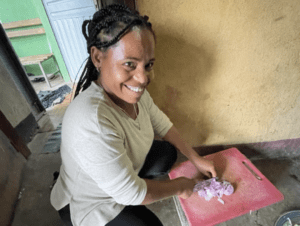
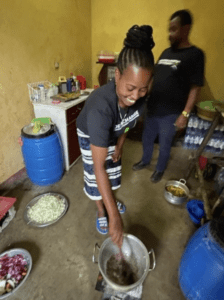
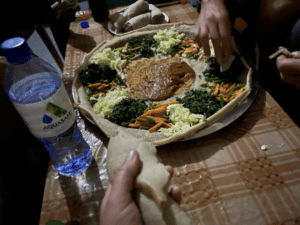
After a hearty meal and a day of learning, the team slept well. It was important to acknowledge the realities of conflict at Negoso Village. But hope also flourishes: the stories of Getahoon and Negash, and the hard work of Mulu and Berchakhan signal a willingness to thrive in the face of adversity.
Inspired by this story? Learn more about the Forestry For Life project and ways you can help!

